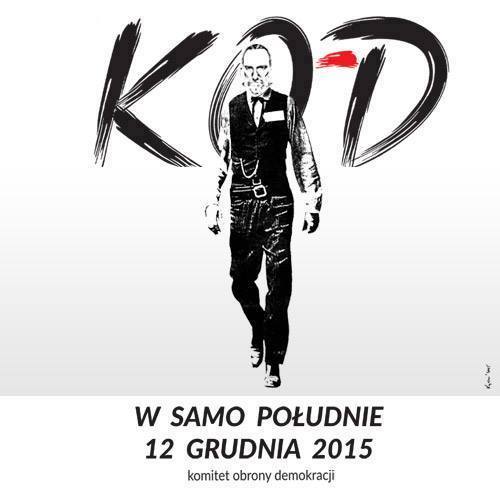

It is thought that the opposition campaign was hindered by their inability to put forward a charismatic (or even a single major) candidate, as well as falling support for the centre-right AWS government. Second place, with only 17.3%, went to Andrzej Olechowski. In the presidential election of 2000, Aleksander Kwaśniewski, the incumbent former leader of the post-communist SLD, was re-elected in the first round of voting, with 53.9% of the popular vote. Kwaśniewski Second Presidency (2000–2005) In June 2000, UW withdrew from the governing collation, leaving AWS at the helm of a minority government. In April 1997, the first post-communist Constitution of Poland was finalized, and in July put into effect. Marian Krzaklewski was the leader of the AWS, and Leszek Miller led the SLD. The AWS and the Democratic Left Alliance (SLD) held the majority of the seats in the Sejm. Jerzy Buzek of the AWS became Prime Minister. In 1997 parliamentary elections two parties with roots in the Solidarity movement - Solidarity Electoral Action (AWS) and the Freedom Union (UW) - won 261 of the 460 seats in the Sejm and formed a coalition government. Article 35 guaranteed the rights of national and ethnic minorities, while other provisions prohibited discrimination and political organisations that spread racial hatred. Poland's new Constitution of 1997 redefined the concept of the Polish nation in civic rather than ethnic terms. Polish prosecutors subsequently decided that there was insufficient evidence to charge Oleksy, and a parliamentary commission decided in November 1996 that the Polish intelligence services may have violated rules of procedure in gathering evidence in the Oleksy case. For his successor, The SLD-PSL coalition turned to deputy Sejm speaker Włodzimierz Cimoszewicz - who was linked to, but not a member of, the SLD. In the ensuing political crisis, Oleksy resigned. Soon after Wałęsa's defeat, Interior Minister Andrzej Milczanowski accused then-Prime Minister Oleksy of longtime collaboration with Soviet and later Russian intelligence. SLD leader Aleksander Kwaśniewski defeated Wałęsa by a narrow margin-51.7% to 48.3%.
DEMOCRACY 3 POLAND FREE
In November 1995, Poland held its second post-war free presidential elections. Also in 1993 the Soviet Northern Group of Forces finally left Poland. The Democratic Left Alliance (SLD) received the largest share of votes.
DEMOCRACY 3 POLAND FULL
After a rough start, 1993 saw the second group of elections, and the first parliament to serve a full term. Olszewski was replaced by first woman as Polish Prime Minister Hanna Suchocka in 1992. This cabinet was supported by Kaczyński brothers. The government of Prime Minister Jan Olszewski was first fully free and democratic Polish government since 1926. No single party received more than 13% of the total vote. More than 100 parties participated, representing the full spectrum of political views. Poland's first free parliamentary elections were held in 1991. Jan Krzysztof Bielecki, at Wałęsa's request, formed a government and served as its Prime Minister until October 1991, introducing world prices and greatly expanding the scope of private enterprise. In November 1990, Lech Wałęsa was elected President for a 5-year term. In the early 1990s, Poland made great progress towards achieving a fully democratic government and a market economy. In December, Lech Wałęsa became the first popularly elected President of Poland. In October 1990, the constitution was amended to curtail the term of President Jaruzelski. The cabinet was reshuffled in July 1990 the national defence and interior affairs ministers (hold-overs from the previous communist government) were among those replaced. Candidates supported by Solidarity's Citizens' Committees won most of the elections they contested, although voter turnout was only a little over 40%. The May 1990 local elections were entirely free. Most of the property of the former Communist Party was turned over to the state. The communist Polish United Workers' Party dissolved itself in January 1990, creating in its place a new party, Social Democracy of the Republic of Poland. In December 1989, the Sejm approved the government's reform program to transform the Polish economy rapidly from centrally planned to free-market, amended the constitution to eliminate references to the "leading role" of the Communist Party, and renamed the country the "Republic of Poland". Bush (right) and Barbara Bush (left) in Warsaw, July 1989.

Wałęsa (center) with US President George H.


 0 kommentar(er)
0 kommentar(er)
